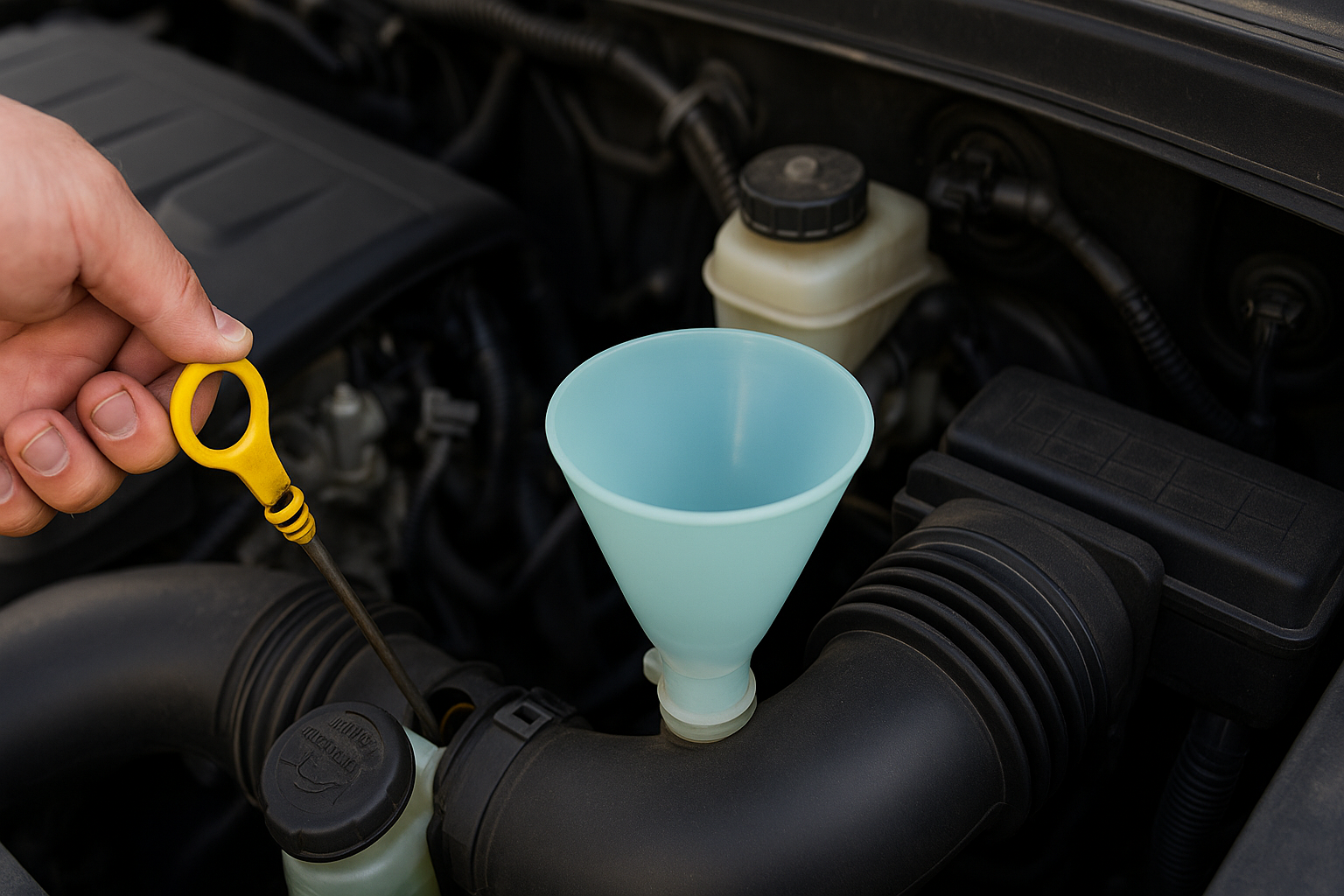Regular car fluid check and proper top off fluids routines are essential to maintaining peak performance and preventing costly repairs. From engine oil to coolant brake fluid, each fluid plays a critical role in lubrication, cooling, and safe operation. In this guide, we’ll cover the most important fluids in your vehicle, show you how to inspect levels, and explain the correct topping‑off procedures.
1. Tools & Materials You’ll Need
- Clean shop rags or paper towels
- Funnel
- Owner’s manual (for fluid specifications)
- Correct type of fluids: engine oil, coolant, brake fluid, power steering fluid, windshield washer fluid
- Protective gloves and safety glasses
2. Engine Oil
Why It Matters
Engine oil lubricates internal components, reduces friction, and carries away heat and contaminants. Low oil levels can cause increased wear and potential engine damage.
How to Check
- Park on level ground and turn off the engine. Wait 5–10 minutes to allow oil to settle.
- Locate the dipstick (usually with a yellow handle) and remove it.
- Wipe it clean, reinsert fully, then pull it out again.
- Read the oil level: it should be between the “Min” and “Max” marks.
How to Top Off
- Remove the oil‑fill cap (often labeled “Oil” or showing an oil can icon).
- Using a funnel, add oil in small increments (¼ quart at a time).
- Recheck the dipstick after each addition until the level reaches the “Max” mark.
- Replace the fill cap securely.
3. Coolant
Why It Matters
Coolant (antifreeze) regulates engine temperature, prevents overheating, and protects against freezing in cold weather.
How to Check
- Ensure the engine is cold to avoid scalding.
- Locate the coolant reservoir (a translucent tank near the radiator).
- Read the level against the “Low” and “Full” marks on the tank.
How to Top Off
- Mix coolant and distilled water at the manufacturer’s recommended ratio (often 50/50).
- Remove the reservoir cap slowly to release any pressure.
- Pour the mixture until the level reaches the “Full” line.
- Replace the cap securely and inspect hoses for leaks.
4. Brake Fluid
Why It Matters
Brake fluid transmits hydraulic pressure to the brake calipers. Low levels can compromise stopping power and safety.
How to Check
- Locate the brake‑fluid reservoir (usually near the firewall on the driver’s side).
- Check the fluid level against the “Min” and “Max” indicators.
How to Top Off
- Clean around the reservoir cap to prevent contamination.
- Remove the cap and add only the specified DOT fluid (DOT 3, 4, etc.).
- Fill to the “Max” mark—do not overfill.
- Replace and tighten the cap, then pump the brake pedal to clear air.
5. Power Steering & Windshield Washer Fluids
Power Steering Fluid
- Locate the power‑steering reservoir under the hood.
- Check fluid level against markings on the dipstick attached to the cap.
- Top off with the correct type (as per manual), avoiding overfilling.
Windshield Washer Fluid
- Find the washer‑fluid reservoir—often marked with a windshield/water icon.
- Pour in washer fluid until it nears the top.
- Use diluted windshield‑washing concentrate as needed, depending on climate.
6. Final Checks & Tips
- Inspect for Leaks: Look under the car and around reservoirs after driving.
- Follow Service Intervals: Replace fluids according to manufacturer guidelines.
- Use Quality Products: Genuine or high‑grade fluids protect system components.
- Record Your Work: Note dates and mileage in your maintenance log.
Conclusion
A regular car fluid check and timely top off fluids keep your vehicle running smoothly, efficiently, and safely. By monitoring engine oil, coolant brake fluid, power steering fluid, and washer fluid, you’ll extend component life, maintain performance, and prevent unexpected breakdowns. Make fluid inspections a routine part of your maintenance schedule and enjoy peace of mind on every drive.

Leave a Reply